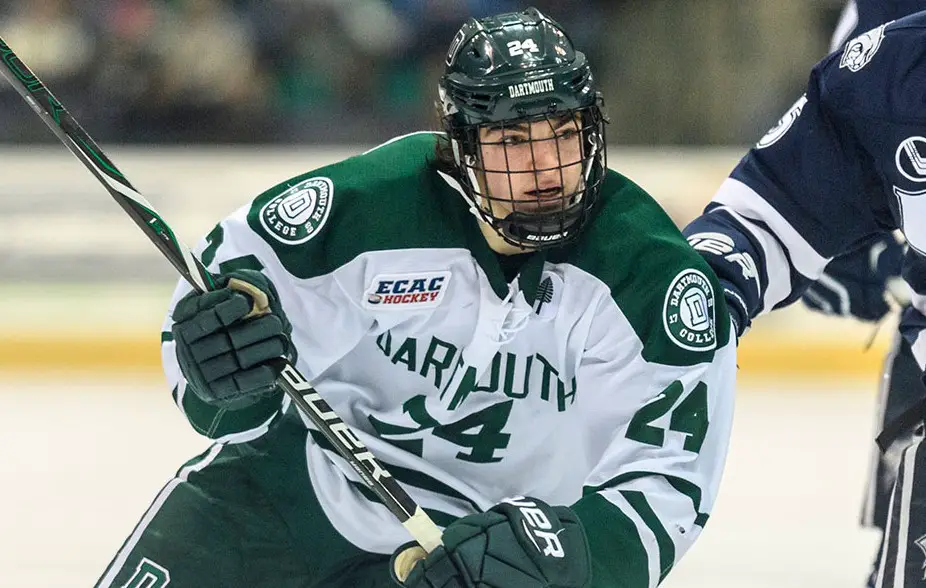
Transfer players have always played a role in college hockey.
But while transfers once served to plug a hole or two on a team’s roster, some schools took advantage of a new rule to help makeover their lineup for this season.
Last spring, the NCAA Division I council voted to allow undergraduate players in football, men’s and women’s basketball, men’s ice hockey and baseball to transfer once without having to sit out a year. The NCAA also decided to give athletes in all sports an extra year of eligibility due to the pandemic.
“I think it’s a really interesting decision and I think it’s great for the kids playing college hockey or any other sport right now,” Quinnipiac coach Rand Pecknold said. “But, boy, is it a bad rule for kids in high school. Everybody is getting pushed back or getting left out or kids that might have played Division I are now playing Division III. It is what it is. We’re going to try and find a way to use it to our advantage and find a way to move forward.”
In the past, one or two ECAC Hockey teams might add a player via transfer each offseason, with Quinnipiac, Clarkson, and Rensselaer typically the most active in that regard. But the new rules have made it an open season on transfers and half of the league’s 12 teams added at least one transfer student in the offseason, with RPI (six) and Quinnipiac (five) leading the way.
“There’s a balancing act going on in college hockey right now,” Clarkson coach Casey Jones said. “The transfer protocol has really sent shockwaves through it from a loss perspective and an addition perspective. If you get too excited about that, you’re not going to have that continuity and I think some teams are going to get caught down the line maybe without having the culture that they want, and maybe without having layers in terms of your recruiting class.”
Even the Ivy League, which accounts for six of the league’s teams, added and exemption for last year’s senior that allowed them to continue to play at their school as a graduate student. However, that exemption wasn’t announced until February, meaning that some players had already moved on.
Only four players – Kyle Betts, Brendan Locke, and Cody Haiskanen at Cornell and Luke Kania at Brown – remained for a fifth year at their school. Three players – Tony Stillwell (Brown/Quinnipiac), Brendan Less (Dartmouth/Quinnipiac), and Shane Sellar (Dartmouth/RPI) – transferred to conference schools.
That exemption is only good for one year and after that the Ivy League will return to its policy of only allowing undergraduate students to compete in athletics.
While that might be viewed as competitive disadvantage, it does give coaches clarity when putting their roster together.
“I think it’s a huge advantage,” first-year Dartmouth coach Reid Cashman said. “We know how many kids we’re losing; we won’t even look at the transfer portal. It’s all about recruiting and developing. I think it really gives us a clear vision. We don’t have to worry about bringing in an outsider.”
Around the league
— Pecknold won his 550th career game Saturday against Northeastern. He is the 11th Division I men’s hockey coach to reach that mark.
— Colgate swept Vermont last weekend to move to 3-0 for the first time since the 2008 season. The Raiders trailed in both games, but rallied each night, including scoring five straight goals in Friday’s win.
— RPI coach Dave Smith is plenty familiar with his team’s first two opponents. The Engineers opened the season against Bowling Green last weekend, where Smith was an assistant coach from 2000 to 2002, and play Canisius this weekend, where Smith was head coach for 12 seasons prior to coming to RPI in 2017.


